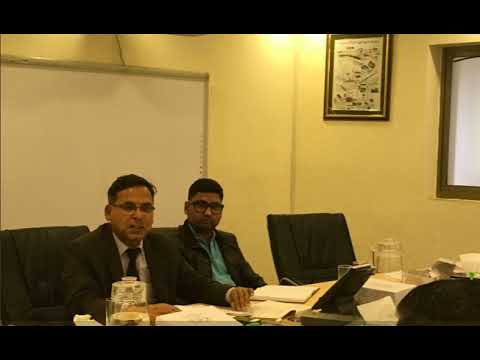
(This is excerpt of opening remarks given by Dr Bipin Adhikari as Chairperson of Nepal Constitution Foundation at the bill review programme on the Bill of Greater Janakpur Development Council (Amendment) Act 2010 organised on December 04, 2011)
Janakpur has the same importance for Hindus around the world that Bethlehem, Nazareth and Jerusalem have for Christians, Mecca, Medina and Jeruslem for Muslims and Lumbini, Bodhgaya and Sarnath for Buddhists. Its importance cannot be over emphasized. Its religious importance apart, the area is the centre of Maithili people, their customs, traditions and culture.
The Greater Janakpur Area Development Council Act was enacted as early as 1998 in order to safeguard, maintain and develop the shrines, temples, lakes and sites of religious, historical and archaeological importance within the Janakpur area and its intermediary (Panchakoshi) circuit areas, and to develop the Greater Janakpur Area as a well-planned pilgrimage and religious site by developing infrastructures for the social, economic and cultural development of the Greater Janakpur Area. The Amendment Bill has been brought forward to increase the area under the Greater Janakpur Area Development Council to run it in a more effective manner and to increase the role of the Chairperson of the Council. It is seen that the bill has been made to carry forward the nation’s policies since the establishment of the Republic.
The Bill seeks to amend the preamble of the Act and seeks to add the terms – “monasteries”, “stupas”, “chaityas”, “mosques”, “mazaar”, “dharmashala” and “tourism” into it. This shows that now the Council will be trying to encourage tourism and religious places of Buddhists and Muslims will also be included in the scheme. It further proposes to amend Section 2(a) changing the definition of Greater Janakpur Area to include all areas under Dhanusha and Mahottari districts as they exist today. In Section 3, it has been proposed to replace the term “Intermediary Circuit area” with “Greater Janakpur area”. Section 5 which provides for the objectives of the Council, is sought to be amended to include monasteries, stupas, chaityas, mosques, mazaars and dharmashalas in the exploration and research works.
Section 6, which provides for the formation of the Governing Council is sought to be amended to include representative from the Ministry of Federal Affairs, Constituent Assembly, Parliamentary Affairs and Culture. The amendment also sets the tenure of both the Chairperson and the nominated members as four years. Section 7 which provides for the meetings of the Governing Council is sought to be amended to make sure that the meetings take place at least once a year instead of taking place as required. Sub clause (1A) is added whereby if one fourth of the members ask for a meeting to the Chairperson then the meeting must be called within 15 days. The Bill seeks to amend Section 8 regarding the functions, duties and powers of the Governing Council to include sub clause (d1) so that the Council coordinates with the Guthi institution to conserve and manage the Guthi lands.
The Bill seeks to add Section 16A regarding the functions, duties, powers and remuneration of the Chairperson under which the Chairperson shall be a fulltime officer and will also work as the Executive head. The remuneration and benefits are to be set by the Government. Section 17(1) is to be amended to the effect that a Director is to be appointed by the Council on the basis of open competition to conduct daily activities under the direction of the Chairperson. Section 24 is sought to be amended so that the Council will have to contact the government through the Ministry of Federal Affairs, Constituent Assembly, Parliamentary Affairs and Culture. The terms “member –secretary” and “Executive Director” are sought to be replaced wherever they have been used by the terms “Secretary” and “Director” respectively.
While these provisions are important, it must be noted here that the Bill has not tried to make the organization an inclusive institution, where all important stakeholders have representation. Similarly, the overall development of Janakpur also requires significant interventions in the development of local language, traditions and cultures. The area has the potential of developing itself as the major site of Maithil language, culture and overall civilization. These initiatives must be linked with the overall objective of this statute. Caste dimensions must also be taken care in the management of the council. The architectural designs of Janakpur must be carefully developed with some sense of history and local traditions. This means close coordination with architectural, urban design and research foundations specializing in architecture, urban regeneration, heritage conservation, green architecture, and planning. It is an open question why the Act of 1998 could not generate enough public participation in the development of Janakpur. Attempts to answer this question may help us find what the grey areas for statutory reform are.
Since the working area of the Council has been greatly increased, it is a matter of concern whether the economic resources of the Council are also going to be increased. Only such increase would lead to effective implementation of the programmes. The formation of the Council has been made more practical. But perhaps such institutions need to include more people’s representatives rather than bureaucrats. Inclusion of VDC Chairpersons would certainly help in this regard. It has been observed that such institutions can function well when their administrative powers are clearly defined. When there is confusion in such matters between several institutions then their work is negatively affected. It is a positive sign that the Bill intends to properly establish the Chairperson’s responsibilities, functions duties and powers. This leads to the hope that the Council will be much more effective in the future.

